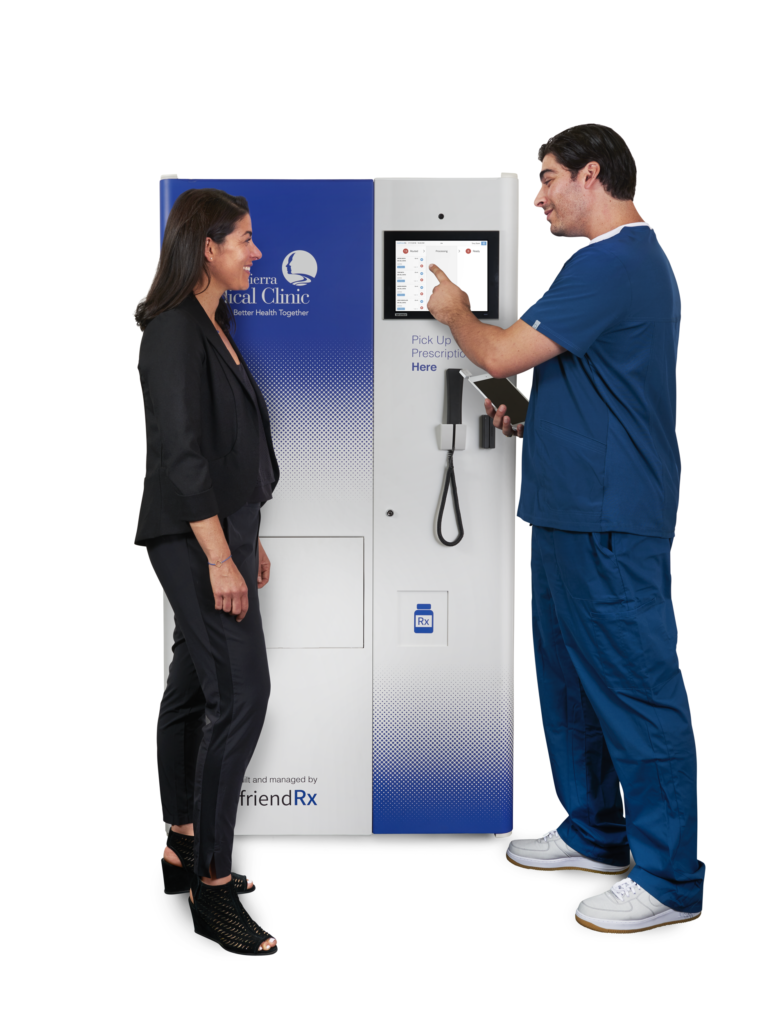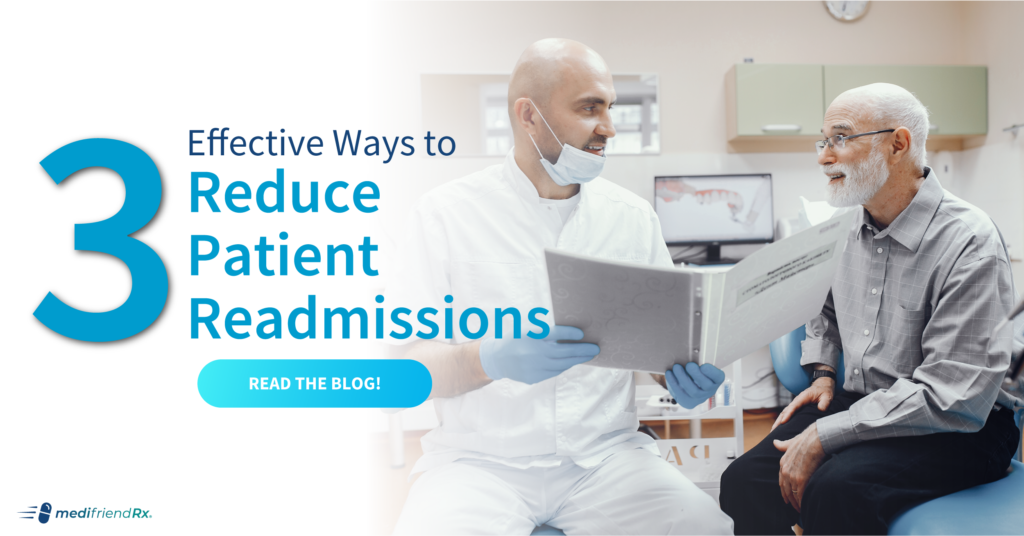Whether you’re a hospital, clinic, or a primary care physician, you’ve probably noticed a pattern in patient readmissions to your facility. You have the same roster of patients coming back for the same or similar treatment again and again without much improvement.
So, how do you effectively reduce patient readmissions?
First, we must talk about the CAUSES of readmission…
Overwhelmingly, the underlying cause of increased patient readmissions tends to be low patient adherence, the cause of which can vary depending on the patient, ailment, and treating facility.
The leading factors in patient adherence, both good or bad, are:
- Overall lack of knowledge about the treatment, prescription, or ailment.
- A lack of accountability to follow through with treatment.
- Overarching negative beliefs concerning healthcare, insurance, or the pharma industry.
- Simple human error or a busy schedule getting in the way.
But, the road to better patient adherence and fewer patient readmissions is long and littered with roadblocks that all medical practitioners experience.
So, how can you effectively reduce patient readmissions without sacrificing the quality of care?
There are three very simple, very effective ways to reduce patient readmissions:
- Optimize the Discharge Process
- Use and/or Offer Mobile Health Applications
- Spend More Time with High-Risk Patients
In this article, we’re going to walk you through a handful of key solutions to help you optimize the patient treatment process to effectively reduce readmissions across your facility.
Optimize the Discharge Process
Believe it or not, the patient discharge process is arguably just as important as the actual treatment process.
Why?
Because how your patient handles their condition and treatment AFTER they leave your care directly impacts their risk for readmissions.

There are three key ways to positively affect what and how your patients manage their condition once they get home:
Provide Medication at the Time of Discharge
Offering prescription medication at the time of discharge is a prime opportunity to nip patient readmission risk in the bud.
In fact, there are tons of tangible benefits of offering point of care pharmacy solutions, including increased revenue for your facility.

This allows doctors to talk the patient through every aspect of their medication treatment plan, while the medication is in their patient’s hand.
With point of care pharmacy solutions, you are afforded the opportunity to:
- Outline what to expect with the particular medication in question
- Instructions on how the patient should be taking the medication.
- Discuss any common side effects to be aware of.
- Answer the patient’s questions.
- Be assured your patient is walking out with their medication in hand.
Integrated pharmacy solutions like the revolutionary medifriendRx® workstation offer all of these benefits and more that directly impact the patient experience, patient adherence, and the risk of readmissions.
In fact, an integrated point of care pharmacy solution can help you fill 80% of all daily patient prescriptions in a single step!
If you’re interested in learning more about how the medifriendRx® pharmacy kiosk can help, request a digital demo today!
Send Home Detailed Visit Summaries
Sometimes visiting the doctor’s office can be overwhelming and important instructions and information goes in one ear and out the other. Providing detailed visit summaries makes sure that all aspects of the patient’s visit, critical or mundane, are heard and understood.

At a minimum, each visit summary should contain:
- The specific reason for the visit.
- Any significant medical findings that the attending doctor made.
- The exact procedures that were performed.
- The exact treatments that were prescribed.
- The current condition of the patient at the time of discharge.
- Specific and detailed instructions for the patient and their family or guardian.
Provide a Follow-Up Plan
For many practitioners, the treatment follow-up plan consists of a visit summary and that’s it. However, setting expectations by letting the patient know how and when you will be following up with them provides a sense of accountability.
A patient treatment follow-up plan should accompany the visit summary and consist of:
- How you will be touching base with the patient or their family.
- When you expect to do so.
- What kind of information you will be gathering on each follow-up.
- What kind of questions the patient can expect to answer.
- What kind of milestones your patient is expected to hit.
Use and/or Offer Mobile Health Applications to your Patients
In this digital age, nearly everyone has a smartphone or mobile device within arm’s reach at all times. But, we’re not using those devices to their fullest potential to improve patient adherence.
Here are a couple of amazing stats to consider:
- 52% of smartphone users research health-related information on their device.
- Not only that, but 90% of surveyed medical practitioners use mobile devices and apps to engage patients in their care.
- Plus, 36% of these respondents believe that app-enabled patient portals and apps are the most effective patient engagement.

Implementing a simple patient portal can make a huge impact on how well patients follow through with their prescribed treatment regimen. This convenient portal can do one or several of the following items:
- Review their recent visits, doctor’s notes, treatment plans, etc.
- Review lab results.
- Schedule a new visit.
- Pay outstanding bills.
- Check benefits or coverage.
- Request prescription refills.
- View educational material.
- Download and complete forms.
- Update contact information.
- Deliver automatic patient reminders.
That last one is key: deliver automatic reminders. Let’s be honest, the vast majority of patient adherence is impacted by medication inconsistency. The fact is that people forget.
In fact, an estimated 50% of all prescriptions filled annually are not being taken as prescribed, and simple forgetfulness is the most frequently reported reason for prescription nonadherence.
A study recently published in the Journal of Medical Internet Research showed that mobile apps help to improve medication adherence, even for older adults who may lack experience with smartphones, computers or the internet.
Direct access to robust mobile health apps significantly increases the likelihood that your patient will remain on their intended treatment regimen based purely on the fact that the apps are constantly with them at all hours of the day.
Spend More Time with High-Risk Patients
This may seem like common sense, but spending more time with patients who happen to have a more complicated or high-risk diagnosis can go a long way in affecting how they view their treatment.
Take the extra time to carefully explain, answer questions, and listen.

Remember that dealing with ANY diagnosis is difficult and treat your patients with care and compassion beyond the actual treatment.
Making them feel heard and understood instantly makes them more open to receiving instructions and criticism on their lack of adherence, if necessary.
A Reduction in Patient Readmissions Lies in Smart Processes
Whether your patient readmission rates only need a little boost or more substantial help, implementing smart processes like those outlined above can dramatically reduce the rate of readmission across your facility.
Plus, a tangible reduction in readmissions tends to go directly hand in hand with improved patient experience and adherence, so a focus on readmission reduction will naturally improve patient adherence and experience.
Have you encountered another effective way to reduce patient readmissions? Share it with us in the comments below!
If you’d like to learn more about how you can reduce readmissions by introducing pharmacy solutions at the point of prescribing, request a digital demo of the medifriendRx® pharmacy kiosk today.
